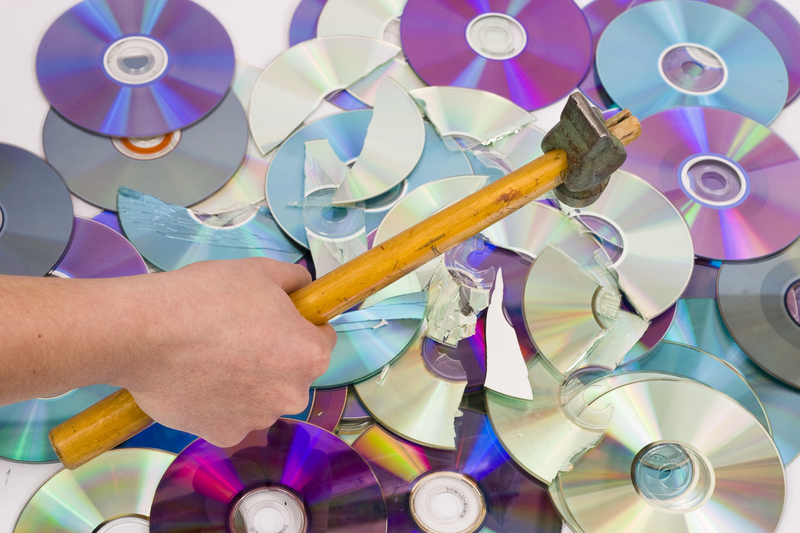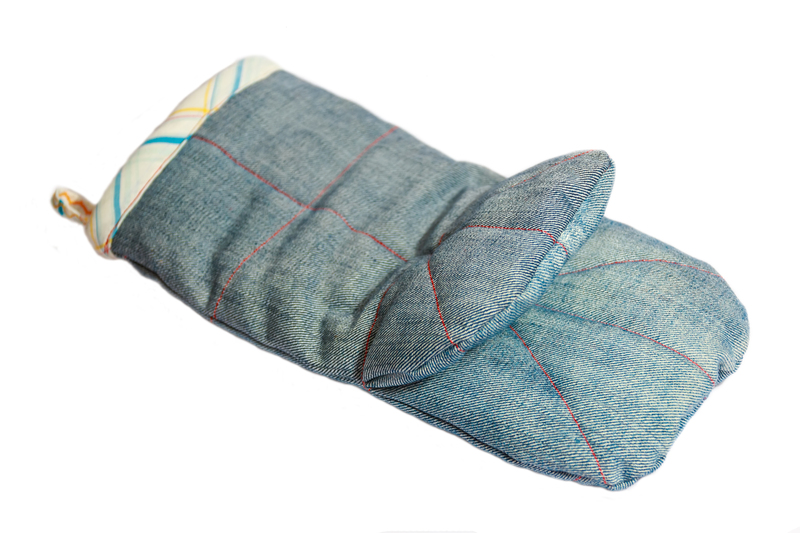Plastic Types to Avoid for a Safer Home
Plastic is everywhere in modern homes, from kitchenware to toys and storage containers. While it's incredibly convenient, not all plastics are created equal when it comes to health and safety. Some types can leach harmful chemicals, especially when exposed to heat or wear and tear. Choosing safer plastic options--or eliminating certain plastics altogether--can go a long way in protecting your family and the environment. In this comprehensive guide, we'll reveal the plastic types to avoid for a safer home, discuss their health risks, and offer practical, safer alternatives.
Understanding Plastic Resin Identification Codes
Before diving into details about which plastics to avoid, it's important to understand the resin identification codes found on most plastic products. These are the little numbers (usually 1 to 7) inside a triangle of arrows, typically stamped on the bottom of containers or products. Each code represents a different type of plastic resin. Knowing these codes will help you identify unsafe plastics at home and make more informed purchasing decisions.
- 1: PET or PETE (Polyethylene Terephthalate)
- 2: HDPE (High-Density Polyethylene)
- 3: PVC (Polyvinyl Chloride)
- 4: LDPE (Low-Density Polyethylene)
- 5: PP (Polypropylene)
- 6: PS (Polystyrene)
- 7: Other (Various Resins, including Polycarbonate)
Not all of these are equally harmful, but some pose greater risks to health and safety. Let's focus on dangerous plastic types at home and which ones to phase out for a healthier environment.

Plastics to Avoid for a Safer Home Environment
PVC (Polyvinyl Chloride) - Resin Code #3
PVC is widely used in items such as shower curtains, vinyl flooring, plumbing pipes, and food packaging. While it's valued for its flexibility and durability, PVC is among the most hazardous plastics found in households.
- Health Dangers: PVC contains and often releases phthalates--chemicals used as plasticizers--which are linked to hormone disruption, reproductive problems, and developmental issues in children. It can also leach vinyl chloride, a known human carcinogen.
- Environmental Concerns: The production and disposal of PVC can create toxic dioxins, which persist in the environment.
Common Household Items with PVC:
- Shower curtains
- Inflatable toys
- Plastic wrap (some brands)
- Plumbing pipes
- Vinyl flooring
- Window frames
Safer Alternatives: When possible, choose items labeled as "PVC-free," opt for silicone, glass, stainless steel, or unlined aluminum. For plumbing, consider PEX or copper pipes instead.
Polystyrene (PS) - Resin Code #6
One of the most common plastics used for disposable cups, plates, food containers, packing peanuts, and meat trays is polystyrene, or Styrofoam.
- Health Risks: Polystyrene can release styrene, a potentially neurotoxic and carcinogenic compound, especially when in contact with hot, oily, or acidic foods. Heating or microwaving food in polystyrene containers is especially dangerous.
- Environmental Impact: PS is rarely recycled and takes centuries to break down in the environment, contributing to pollution and harm to wildlife.
Common Household Items with Polystyrene:
- Disposable foam cups and plates
- Takeaway food containers
- Egg cartons
- Meat trays
- Packing peanuts
Safer Substitutes: Glass, porcelain, ceramic, or reusable plastic containers made from HDPE (#2) or PP (#5) are much safer. For disposable items, try compostable products made from paper or bioplastics.
Polycarbonate & Other Resins (Other/#7)
The "Other" category of plastics--marked with resin code 7--includes various bisphenol-based resins such as polycarbonate and Tritan. Polycarbonates are valued for their clarity and toughness, but they pose significant health concerns.
- Health Dangers: Polycarbonate plastics often contain BPA (bisphenol-A), a chemical shown to mimic estrogen and linked to a plethora of health problems, including hormonal disruptions, heart disease, obesity, type 2 diabetes, and developmental abnormalities in children.
- Leaching Risks: BPA can leach into food and beverages, especially when containers are scratched, heated, or washed repeatedly.
Common Household Items with Polycarbonate (#7):
- Reusable water bottles (older types)
- Baby bottles
- Food storage containers
- Sports bottles
- Some can linings
- Some kitchen appliances
Even some "BPA-free" plastics may contain similar chemicals (like BPS) that can be equally hazardous. Their long-term safety hasn't been proven.
Best alternatives: Choose glass or stainless steel bottles and containers. For baby products, always opt for "BPA/BPS-free" labels and check for safety certifications.Other Plastics to Watch Out For
While the plastics above are the most notorious, other less harmful plastics can still carry some risks if misused.
- Polyethylene Terephthalate (PET or PETE, #1): Common in single-use water bottles and food packaging. Generally considered safe for one-time use, repeated reuse or exposure to heat can encourage leaching of antimony and other chemicals.
- Low-Density & High-Density Polyethylene (LDPE #4, HDPE #2), Polypropylene (PP #5): These are considered among the safest plastics. However, avoid exposing them to high heat and never use them in microwaves unless labeled "microwave safe."
Why Certain Plastics Are More Dangerous in the Home
Many hazardous plastics contain additives and chemicals that can migrate into food or leach into dust and air, especially when heated, scratched, or aged. Children--the most vulnerable group--are at greatest risk, particularly from toys that they put in their mouths.
- Heating & Reusing: Heat and repeated use accelerates chemical migration in many plastic types, even safe ones.
- Scratches & Wear: Damaged plastic releases more chemicals, and old containers often become unsafe.
- Contact with Fat or Acid: Oily or acidic foods draw out more chemicals from plastics.
- Infant & Child Products: Young children are more susceptible to chemical exposure due to their smaller bodies and developing organs.
Hidden Places Unsafe Plastics Lurk in Your Home
- Kitchen: Plastic cutting boards, cooking utensils, food wrap, storage containers, non-stick or plastic cookware, and takeout containers.
- Children's Rooms: Cheap toys, teething rings, crib liners, inflatable furniture, and older baby bottles.
- Bathroom: Shower curtains, bath toys, cosmetic bags.
- Living Room: Vinyl blinds, electronic cords, air mattress.
- Garden & Garage: Garden hoses, gloves, plastic tools, storage tubs.
Many of these items could be replaced or upgraded with safer materials to create a healthier home environment.
Tips for Creating a Safer Home with Better Plastics
- Check Resin Codes: Avoid plastic types #3, #6, and #7 when possible.
- Replace Old Plastics: Update food storage, baby items, and drinkware if they are scratched, cloudy, or old.
- Don't Heat Plastics: Avoid microwaving, dishwashing, or pouring hot liquids into plastic containers.
- Look for "BPA/BPS-Free": But double-check manufacturer claims and safety certifications.
- Switch to Glass, Stainless Steel, or Silicone: These materials are inert, reusable, and much less likely to leach chemicals.
- Buy Safer Toys: Opt for wood, cloth, or high-quality BPA- and phthalate-free plastics for children's products.

Eco-Friendly and Non-Toxic Alternatives
Embracing alternatives to plastic benefits both your health and the planet. Here are some top choices for a safer, greener home:
- Glass: Perfect for food storage, drinking, and baking. It doesn't leach chemicals and is endlessly recyclable.
- Stainless Steel: Durable, lightweight options for bottles, lunchboxes, and cookware.
- Silicone: Flexible and ideal for baking mats, kid's utensils, and stretch lids. Make sure it's food-grade.
- Natural Materials: Wooden toys, cotton bags, ceramic dishware, and beeswax wraps are great low-tox alternatives.
- Compostable Plastics: PLA and other plant-based plastics are emerging as alternatives for disposable items, though they have their own disposal challenges.
Conclusion: Commit to Safer Plastics for Your Family
Understanding and avoiding risky plastic types for a safer home is a crucial step toward a healthier lifestyle. By being vigilant about plastics in your environment--especially resin codes #3 (PVC), #6 (Polystyrene), and #7 (Polycarbonate and other).
- Choose safer alternatives wherever possible.
- Replace aging or suspect containers promptly.
- Opt for glass, stainless steel, and food-grade silicone in the kitchen and beyond.
- Minimize single-use plastics and educate your family about safe choices.
Taking these precautions will dramatically reduce your exposure to harmful compounds, foster a safer environment for your loved ones, and support a greener planet. Start auditing the plastics in your home today--and make a conscious, lasting change toward safety and sustainability!
Further Reading
- EWG's Guide to Safer Plastics
- CDC: Bisphenol A (BPA) Fact Sheet
- NIH: About BPA
- Safer Chemicals: BPA in Plastics
Be proactive in making thoughtful choices about plastics to promote a safer, healthier home for everyone who lives there.